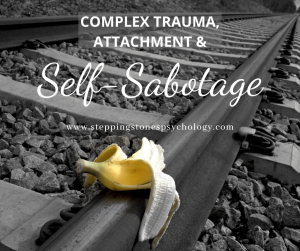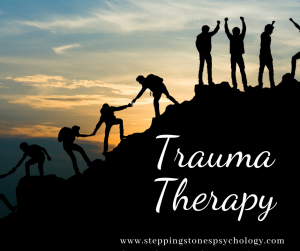When you think of a Marvel movie, mental health probably isn’t the first thing that comes to your mind. Explosions, action and cheesy punch lines are more like it. But Thunderbolts, Marvel’s upcoming film, offers exactly that: A movie that can be used as a mental health resource. Beneath the chaos and humour is a surprisingly tender exploration of what it means to live with inner struggle and how connection can become our greatest source of strength.
There are moments in our lives when discomfort rises to the surface, such as emotions we would rather not feel, and parts of ourselves we would rather not face. But what if those uncomfortable places were not signs of weakness, but evidence of where growth is already beginning and a sign into our evolving strengths? That we are slowly starting to face what needs healing. That is the invitation Thunderbolts offers through its characters and story, where it sees our struggles not as burdens, but as starting points for growth and healing.
The film brings together a cast of characters who are navigating their own mental health journeys. This includes experiences with depression, suicidal thoughts, and bipolar disorder, to name a few. Rather than glossing over these issues or turning them into dramatic plot devices, the film treats them with compassion, empathy and humanity. These characters are messy, flawed, and real, and in that, deeply relatable.
One of the most powerful elements of the story is the Void, the dark alter-ego of Bob Reynolds (aka the Sentry). But this villain is not just a force to be defeated, but instead a metaphor for the emptiness many people feel when they are overwhelmed by trauma, grief, or despair. It reflects that painful internal experience so many of us try to push down or hide, such as the sense of being consumed by something invisible and impossible to name.
Thunderbolts encourage connection, not as a magical cure, but instead as a resource that acts as lifeline. The film gently shows us that healing does not happen in isolation but instead in relationships, such as showing up for one another. There is a strong focus on not having to carry our pain alone, but instead being vulnerable enough to share it and allow this to be witnessed and accepted.
This echoes the work of authors like Johan Hari, who famously said, “The opposite of addiction is not sobriety. It is connection.” It also aligns with the teachings of Dr. Gabor Maté, who reminds us that addiction isn’t about a moral failing or lack of willpower, but about trying to soothe deep, often unacknowledged pain. According to Maté, the question isn’t “Why the addiction?” but “Why the pain?”. I am honoured to have completed Maté’s one year training in Compassionate Inquiry, where these themes were often explored in great depth and I was in awe of his profound wisdom.
Thunderbolts reflect the whole picture, like a holistic perspective without pathologising human suffering. Instead, like what trauma-informed thinkers like Maté have long emphasised, it highlights how our attempts to cope, no matter how destructive, often come from a longing for safety, belonging, and relief. And it reminds us that it’s through compassion and connection, not judgment or isolation, that true healing becomes possible. As Maté says, the real question is not “What’s wrong with you?” but “What happened to you?”
This perspective is echoed across other trauma specialists. For example, according to Bessel van der Kolk our bodies store the impact of trauma, even when our minds don’t consciously remember it. When we go through overwhelming or traumatic experiences, our brains and nervous systems may not fully process or resolve them. Instead of being ‘filed away’ like a normal memory, the trauma stays active. This means the trauma often shows up in physical symptoms, emotional dysregulation and our behaviours/reactions. Viewed through this lens, even our messiest coping strategies begin to make sense.
Thunderbolts doesn’t cast its characters’ pain as weakness, it reveals how their struggles are shaped by what they have endured. In doing so, it reminds us that healing doesn’t come through shame or isolation, but through empathy, presence, and connection. The same principles that help us survive trauma are also the ones that guide us toward healing, such as being seen and not having to face our suffering alone.
What I’ve come to understand from both experience and learning from the many trauma experts is that trauma isn’t always about the traumatic event in itself, but instead it is about whether we had someone there with us during and afterward, such as someone who helped us feel safe again, or whether we were simply left alone with it all.
Maté explains that trauma isn’t the event itself, but what happens inside us when we’re left without support or safety. According to him it is not just because of what happened, but because of what didn’t happen such as the support that was missing. I often explain this to clients when there have been a history of neglect, including the lack of healthy boundaries growing up, and also when clients have experienced emotional neglect. From attachment theory, we know that trauma can also come from emotional neglect or disconnection, especially when our needs were dismissed, ignored, or misunderstood as children. This is something Judith Herman has also touched on, such as how trauma often involves a deep rupture in trust, particularly in relationships.
Peter Levine also talks about how trauma gets stuck in our bodies when no one was there to help us make sense of what we went through.
For me, what all this tells me is that trauma is so often made worse by silence, by going through pain without someone beside us. So the trauma can hurt most not because something happened, but because we were left to face it on our own. This is an important message I believe Thunderbolts is trying to give.
Even in the darkest moments in the movie, there is humour, because part of being human is finding joy, even when things are hard. That balance of light and shadow, we all have within us, is portrayed in the movie and it is what gives it its heart. Humour can be a powerful ally in mental health and trauma recovery. While it doesn’t erase pain, it offers moments of relief, helping the nervous system shift out of survival mode. Laughter can reduce stress, ease tension, and create a sense of connection with others, something especially important for those healing from trauma. It also helps us reclaim a sense of agency and perspective, reminding us that even in the midst of struggle or a void, a moment of joy and lightness is still possible. In this way, humour becomes not a way of avoiding our pain, but it makes the pain more accessible and lighter, which in return, creates space for healing and resilience.
At our practice, we see every day how the parts of ourselves we try to hide often hold the greatest potential for growth. When we begin to accept even the darker corners of our experience, we give ourself the gift of empowerment, growth and healing. Struggles don’t have to define us but they can shape us, quietly building resilience in ways we may not recognise at first.
This kind of growth isn’t just about surviving. Instead it’s about evolving with intention. As we learn to navigate our own inner worlds with compassion and empathy, we become more capable of walking alongside others in theirs. In this way, our deepest challenges can become the foundation for empathy, connection, and strength, not just for ourselves, but in our relationships and for the communities we are part of.
Thunderbolts reminds us of that none of us are beyond hope, and none of us have to face pain and emotional suffering alone.
©2025 Sharmi under Stepping Stones Psychology – All Rights Reserved.
Edited and Co-Written by Vash




